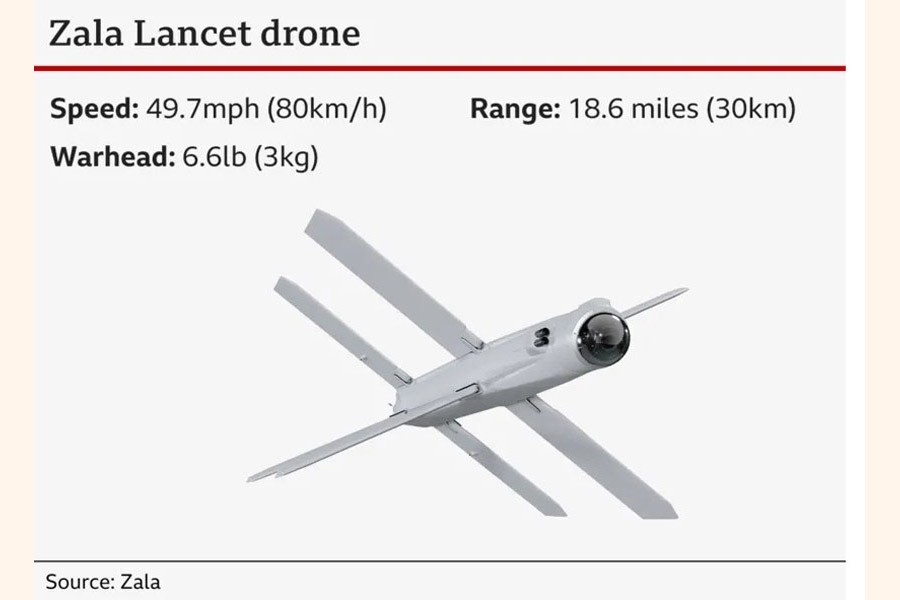
Ukraine thrown into war's bleak future
Drones open new battlefront
Russian Lancet drones most powerful and difficult to block
Friday, 26 July 2024

KYIV, July 25 (BBC): The black box sits on the army truck dashboard like a talisman, its tiny screen lighting up with warnings when Russian drones are above us. We are driving fast along a country road in the darkness near the front lines outside Kharkiv.
Like many in this war, the soldiers inside have come to revere the little cube they call "sugar"; it warns of the unseen dangers above.
On the vehicle's roof are three mushroom-shaped antennas that make up separate drone-jamming equipment. The car emits an invisible aura of protection that will thwart some, but not all, of the Russian attack drones patrolling the skies above this battlefield.
"It has detected the Zala Lancet Russian drones," says Senior Lt Yevhenii, 53, from the front passenger seat, describing one of the most powerful long-range Russian drones and its targeting drone. "Is that why we're driving so fast?" I ask, aware that the drone-jamming antenna is useless against a Lancet.
"We're not a priority for them, but it's still better not to slow down because it's very dangerous," says Yevhenii, from the Khartia Brigade of Ukraine's National Guard.
The jamming equipment blocks roughly 75% of frequencies that drones use to communicate with their operators, but some like the Lancet are difficult to block because they are entirely autonomous once their target has been marked. Because of the Lancet's power, it tends to be used on larger targets, such as armoured vehicles or infantry positions, the Ukrainians say.
Almost none of this technology was here in Ukraine a year ago; now it is commonplace. Drones, which were once peripheral to the war, are a central component for both sides, alongside infantry and artillery as Ukraine struggles to hold back Russian advances.
Ukraine has been thrown into the bleak future of war, where within minutes individual soldiers, fast-moving vehicles and trench positions can be precisely targeted. Drones have civilians in their sights too: about 25 from Russia attacked Kharkiv on Tuesday night, although most were intercepted.
Ukraine's army is fighting back with its own drones, and there are dozens across this stretch of front line. One Ukrainian soldier tells me every day they kill 100 Russians.
The last images from drone cameras are usually of men panicking, their arms flailing, weapons firing before they are killed. The brigade's 37-year-old drone commander, who goes by the call sign Aeneas, says that without shelter in a building there is little chance of survival - for Russians, and his men too.
"It's the new way or a new path in modern war. In 2022 it was only infantry war and today one half is only a war of drone, a battle between Russian drones and ours," he says.
The move to drone warfare is a combination of necessity and innovation. Drones are in plentiful supply, even though when armed they lack the explosive fire power of artillery.
Ukraine has consistently run short of artillery shells, and its allies have been slow to produce and supply them. But a Drone Coalition of Ukrainian allies has pledged to supply the country with a million drones this year.
Russia has made its own innovations on the battlefield too, using an older technology, and the village of Lyptsi, just six miles (10km) from the Russian border, has paid the price.
It was devastated by glide bombs - Soviet-era "dumb bombs" fitted with fins and a satellite guidance system. Some are as large as 3,000kg (6,600lbs) and, when launched from aircraft, glide onto Ukrainian infantry positions and towns to highly destructive effect.
One woman named Svitlana, who was driven out of Lyptsi by these attacks, told us: "Everything was exploding all around. Everything was burning. It was scary there. It was impossible to even get out of the cellar."